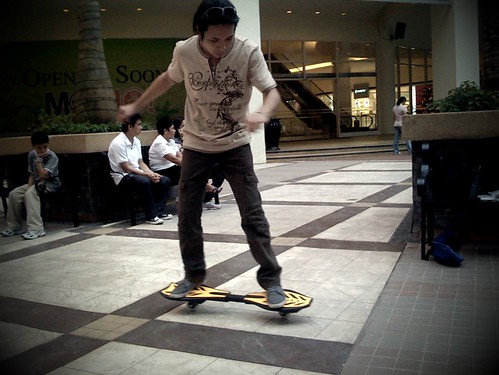I’ve been thinking recently about soul mates and the chances of finding that soul mate. Why have I been thinking about this? Because I drink too much every night and wake up every morning with a dry throat and a dull headache, and thus cannot bring myself to start working until after several hours of staring blankly into space. But I digress. This piece is an attempt at quantifying the odds of finding that special somone, and contains some thoughts regarding how to increase those odds further.
Now, the first step is of course believing that your soul mate exists. I know a lot of people don’t believe that everyone has a soul mate, but for the purposes of this article, let’s just ignore them.
The tricky thing about this whole discussion is that the cosmos never bothered to lay down any ground rules regarding soul mates, so we’re unfortunately stuck making a bunch of assumptions. Here are the ones that I’m basing my calculations on:
1. Your soul mate exists, and is currently alive somewhere in the world. I’m not going to waste time calculating the odds of meeting a soul mate who was alive B.C., or will be born around the time the flying car goes mainstream. We’re going to assume that the cosmos was considerate enough to give you a fighting chance after all.
2. Your soul mate is of the preferred sexual orientation. This whole discussion would be pointless otherwise.
3. Your soul mate speaks at least one of the languages that you do. Again, it would be otherwise impossible to connect with your soul mate if you can’t speak a common language.
(Nota Bene: If you disagree with any of the items above, tough luck. I’m not doing your math for you.)
Given those three assumptions, you can compute the maximum number of potential soul mate candidates simply by multiplying the population of your chosen language by the percentage of your preferred sexual orientation. Let’s call this your Personal Soul Mate Index.
For example, my chosen language is English (1.5 billion native and non-native speakers) and my preferred sexual orientation is straight female. The global gender ratio is about 51:49 in favor of men, so I multiply 1.5 billion by 0.49, which would be roughly 735,000,000. I would then reduce that number further by 2% to get my PSMI (which is the alleged gay ratio), leaving me with 720,300,000 straight English-speaking females. If you were a gay male, you would multiply 1.5 billion by 0.51 and then again by 0.02, giving you a much smaller PSMI, at only 15.3 million.
(Note that you could also choose to totally ignore the language part of the equation and simply multiply your sexual orientation by the total global population, which is at 6.7 billion at the time of this writing.)
I’ll give you a moment to compute your own PSMIs.
All good? Great, let’s move on to the fun stuff.
So, the likelihood of me meeting my soulmate is roughly 1 in 720,000,000, and what we’re going to do over the next few paragraphs is work out just how “likely” that is. I’m a 27-year-old Filipino, and have a life expectancy of 71 years. That means I’ve got a potential for 44 more years of searching for that darned soul mate of mine. Let’s be more granular, and calculate how many days that is:
(365 days * 33 common years) + (366 days * 11 leap years) = 16,071 days to go
Let’s tack on the past 9 years of my life as well, or since I turned 18, i.e., legally capable of having sex with my soul mate should I meet her. (And if that sounds a little crass, I apologize. I’m sure you would simply lose yourself in your soul mate’s eyes forever.)
16071 + ((365 * 7) + (366 * 2)) = 19,358 days in total
We can express all of this very simply by saying that if I want to meet my soul mate and I am unlucky enough to have had to meet every single person in my entire PSMI before I finally meet her, I would have to see 720,300,000 people over 19,358 days starting when I turned 18. (37,209 people per day, or about half of the people who went to the Eraserheads concert last year.)
Does that sound discouraging? Let’s do some quick math to work out the problem.
I’m sitting at a Starbucks as I write this, and there are easily 30 other people in and around this place with me. I’ll walk back to the office and there are another 60 people there. Later tonight I’ll have dinner at the Fort, and will come into indirect contact with about 100 or so different people. If I were commuting, I’d get on to a train car with 50 other people all mashed up against each other.
Depending on how much you move around, you come in to indirect contact with about 150-200 unique people every day. Possibly even more than that if you really pound the pavement. That means that without drastically changing my lifestyle, I will see about 3,871,600 people over the course of my life or about 0.5% of my PSMI. Expressed in more practical terms, my chances of finding my soul mate at any point in my post-18 life is about 1 in 200. If you play Texas Hold ‘Em, this is roughly the same odds as being dealt pocket aces (220:1). (Interestingly enough, I’ve been dealt pocket aces about half a dozen times at Hold ‘Em that I can remember.)
Is that depressing? Yeah, a little bit. 20 years ago, that would be pretty much all she wrote too. But these days we’re fortunate enough to have a way to connect with thousands more at any given moment, i.e., the internets. I’ve got about , about and have built a handful of little web toys that thousands of people use every day. Your own numbers will be drastically different of course, but the point is that we’re able to cheat the odds by making ourselves really visible online. In fact, if I assume that my soul mate is a straight female who speaks English and has Internet access, my PSMI is reduced even further. There are 1.4 billion people on the Internet, 430.8 million of which speak English, and 206.8 million of which are probably straight females. Now my chances are about 58:1, which in Hold ‘Em terms is roughly the odds that you would get a pair of aces, kings, queens or jacks in your pocket (54.3:1). If all that sounds a little fanciful, it’s really not. I mean seriously, what kind of cosmos would give me a soul mate that didn’t use the Internet? That would just be cruel. (Or for that matter, didn’t subscribe to poker hand probabilities.)
One way to look at the 58:1 ratio is thusly: if I had 58 times to relive my life, I would cross paths with my soul mate once. That sounds incredibly sad, so here’s another way to look at it: if you took 58 other guys with similar soul-mate indices as me, only one of us would find our soul mate. I like the sound of that a little bit more, but I’m not entirely sure it’s the right way to look at the numbers. Anyway.
The trick here really is to make yourself as visible as possible online so as to reach as many people as possible. Joining social networks and generating online content is the new-school equivalent of taking yoga classes or joining photography clubs in order to meet new people, and it’s a lot more cost-effective too. The idea of course is not to stop looking. Just because the odds seem stacked against you, doesn’t mean it isn’t possible. After all, according to the Drake equation, the number of other currently-existing civilizations in our entire galaxy could be as little as 2, and yet we still train our telescopes at the sky every night, waiting.






